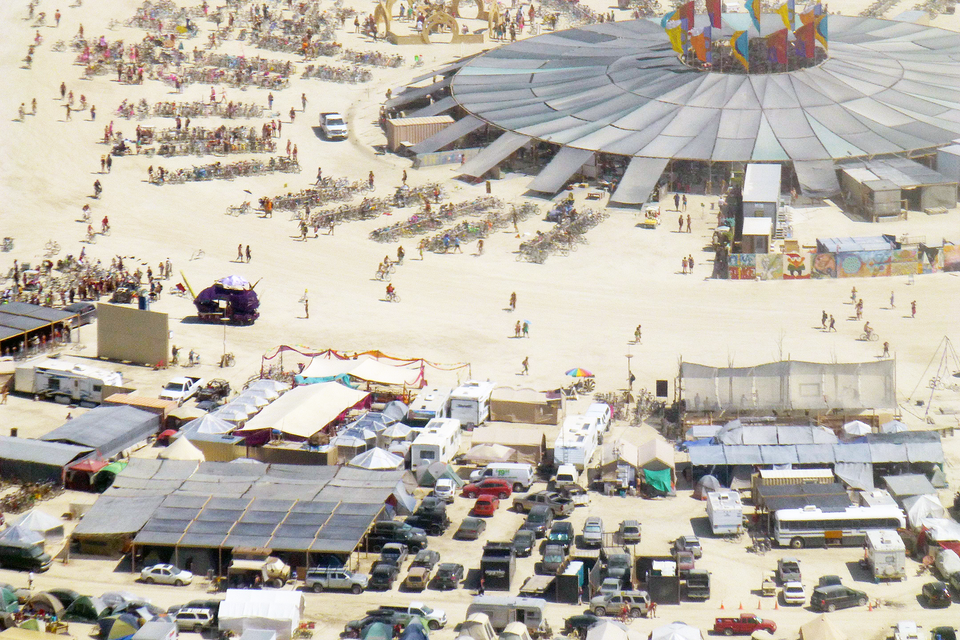In 2014, two multistory human figures could be seen rising from the desert in Nevada, locking arms and eyes in a close embrace. From a distance, their sandy skin made it seem as though they’d risen from the ground, benevolent Titans watching over those who paid them a visit.
A closer look revealed that they were made of wood, part of an art project erected for Burning Man. Fans of the gathering -- burners -- could climb inside the figures and gaze upon its peak-ceilinged cathedrals. Once Burning Man concluded, the work was lit ablaze, along with the rest of the large-scale sculptures created that year.
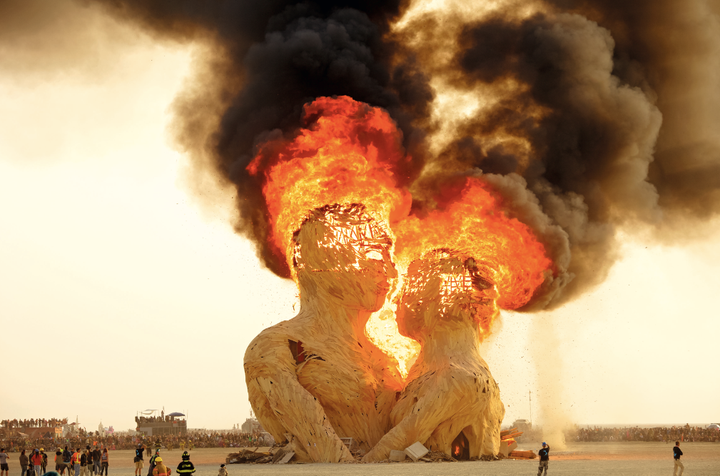
Photographer NK Guy has been capturing the artworks built for Burning Man on camera for over a decade, recently anthologized his findings in a new book, Art of Burning Man. In it, he pays poetic homage to the way the sun rises over the event's central sculpture in the mornings, and the glow of LED lights and lasers after sunset. He emphasizes the structures' ability to bring people together from all walks of life -- accomplishing, according to Guy, the feelings of connection that art should achieve, but so often fails to inside of a museum.
A celebration of Burning Man, but also an explanation for those unacquainted, the book explains the origin of the temple-like artworks that crop up on the playa each year.
Artist David Best conceived and led the construction of Burning Man’s first temple, "The Temple of the Mind," in 2000. Initially a cryptic title for an intentionally nondescript structure, the work took on a new meaning when one of the men who helped build it died in a motorcycle accident while returning from a day’s work on the piece. "The Temple of the Mind" became a memorial for the lost worker, and, over the course of the festival, a place where attendees could share their stories of loss. Guy described it as, “an epicenter for community emotion,” describing the simultaneously vague and powerfully emotive forces that emphatic fans of the festival enjoy.
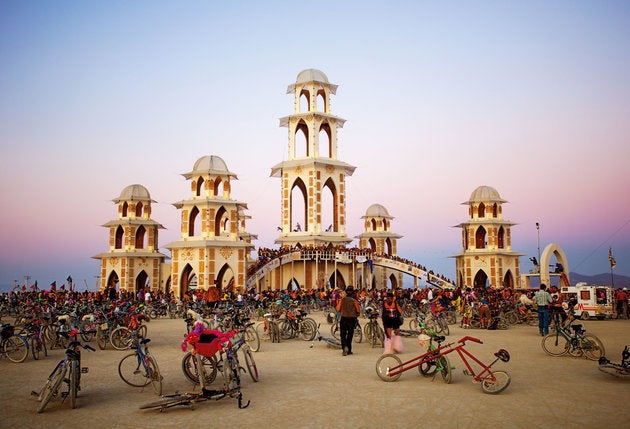
TEMPLE OF TRANSITION by the International Arts Megacrew.
Every year, Burning Man employs a theme for its artworks. Once year it was Shakespeare’s monologue from “As You Like It,” beginning with “All the world’s a stage.” In 2014, the year that the embracing plywood couple hit the desert, the theme was Caravansary, referring to the sanctuaries that cropped up along the Silk Road. And, this year’s theme, Carnival of Mirrors, centers on masks and disguises. Of course, not all works stick to the year’s theme: 2015 will boast a typewriter so huge that attendees can climb on top of it.
In the book's introduction, Guy notes that the impermanence of many of the structures built over the years has a payoff for many creators: though most of the works burn at the conclusion of the festival, they actively engage a community rather than sitting stiffly on shelves or walls. He writes, "When you’re an artist, you’re always told that your work is going to survive, that it’s going to last forever. And then one day you realize that it’s not." On the other hand, he believes works that embrace this transience and make the most of their short lives can be fulfilling.
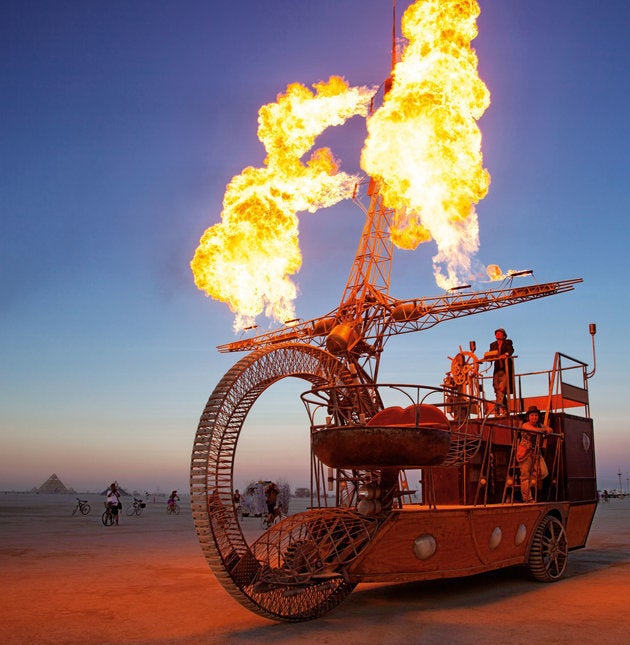
Guy emphasizes this theme of community throughout the works he highlights in his book. The transient nature of the structures, and the communities that swirl in and out of them, often lend them a spiritual air -- which is why many of the large-scale works are referred to as Temples. These sites may be places to mourn, but also to meditate, to create, and to reflect. They're multipurpose, nondiscriminatory, and can't be bought or sold -- instead, of course, they're burned.
Overall, a Burning Man temple should be an oasis that welcomes everyone -- a blank slate where attendees can leave their mark. Building a structure that aims to have no inherent meaning presents a real challenge. In some cases, artists construct a mash-up of popular religious iconography, not valuing any single culture more than another. But in the most powerful works, the desert skyline is pierced by an image of a single, towering individual -- or better yet, two people sharing a warm embrace.
Check out more of NK Guy’s photos of the most remarkable art from Burning Man:
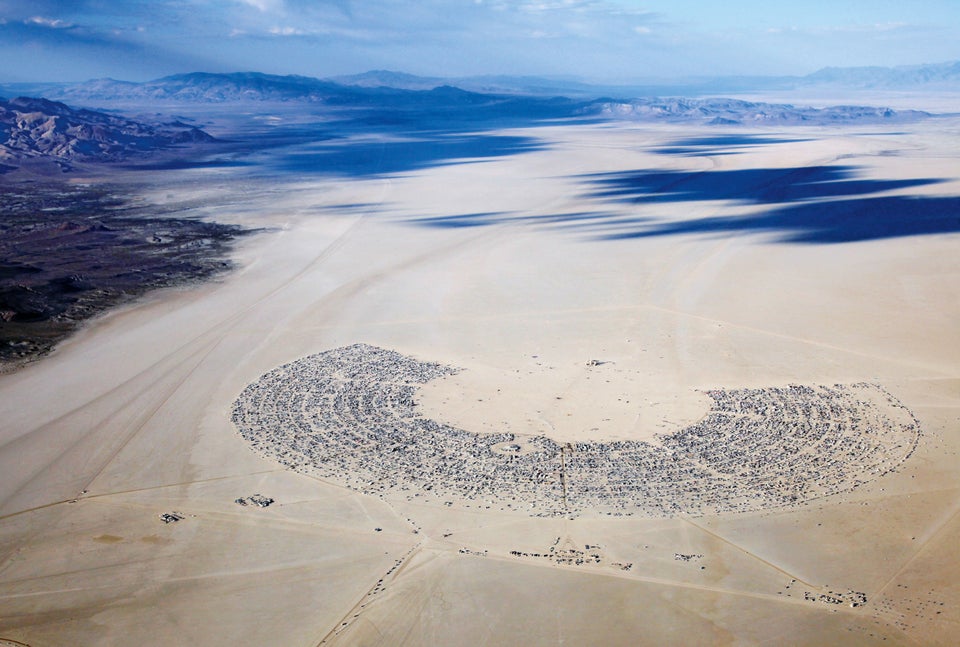
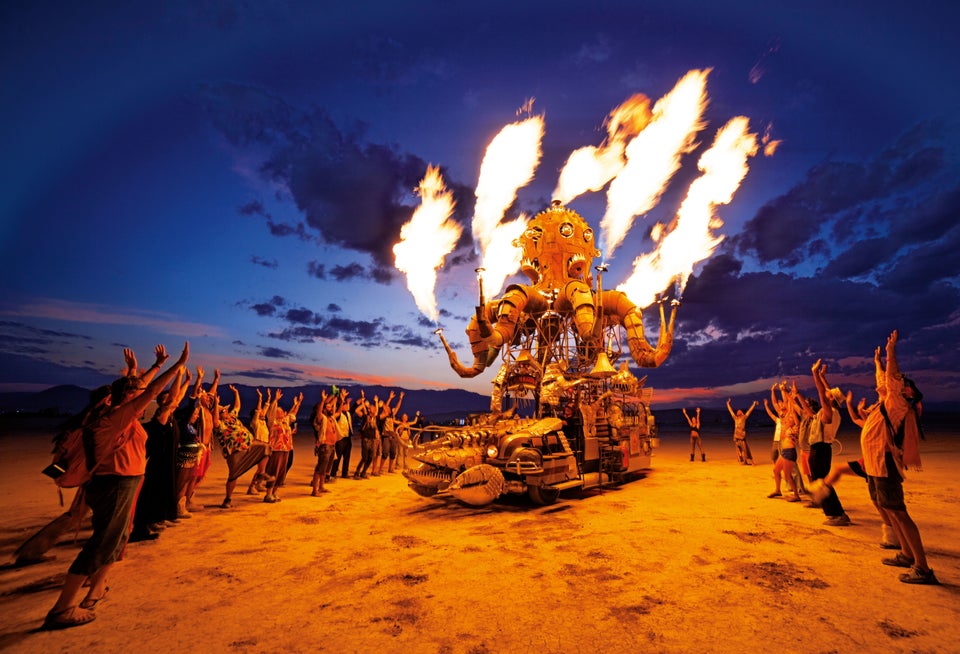
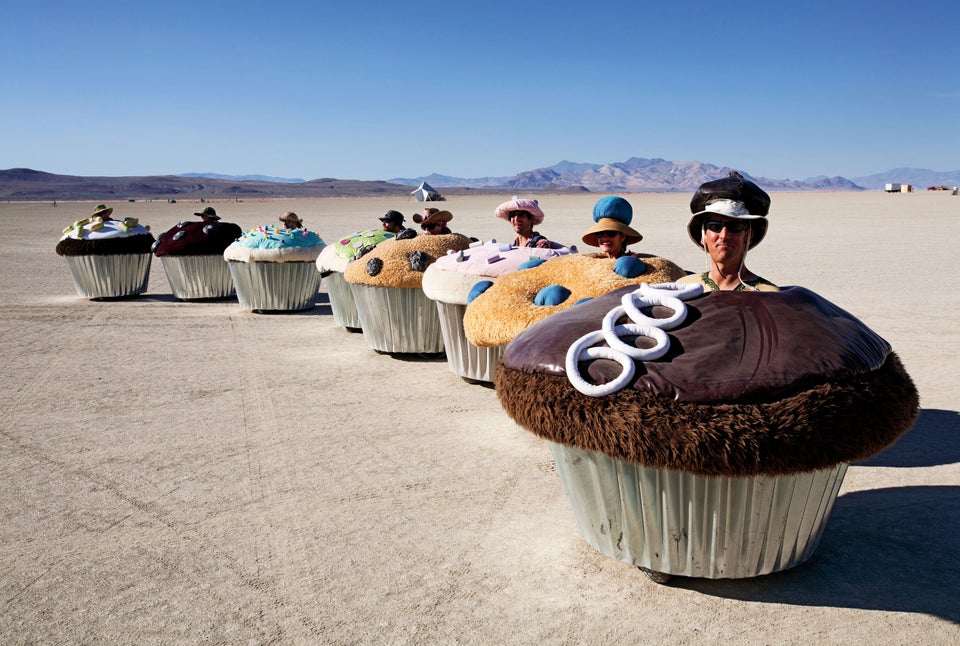
CUPCAKE CARS by Lisa Pongrace, Greg Solberg and the Acme Muffineering team.
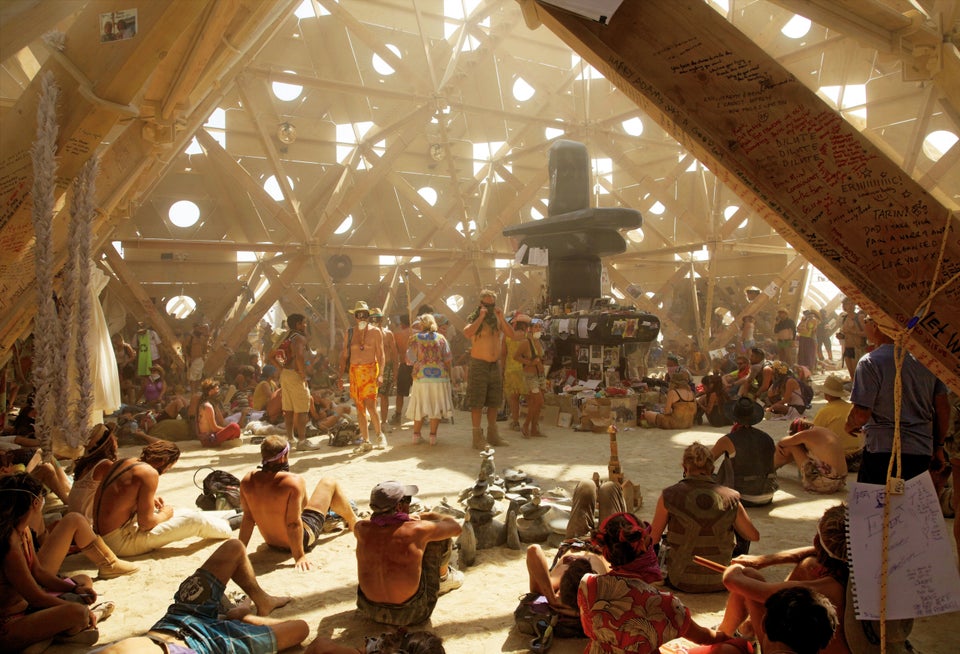
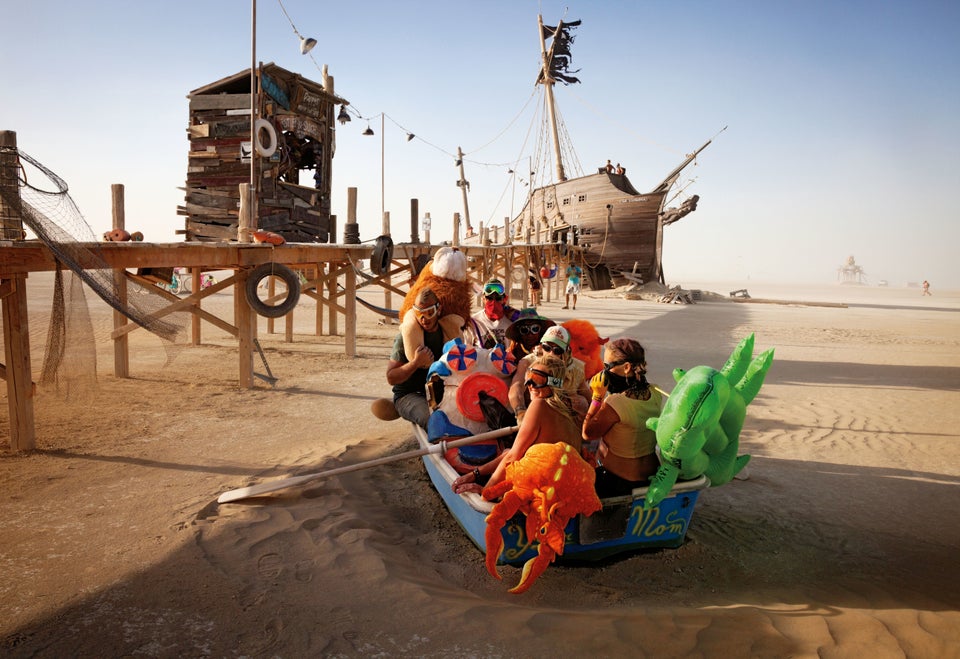
PIER 2 by Kevan Christiaens, Matt Schultz, and the Pier Group
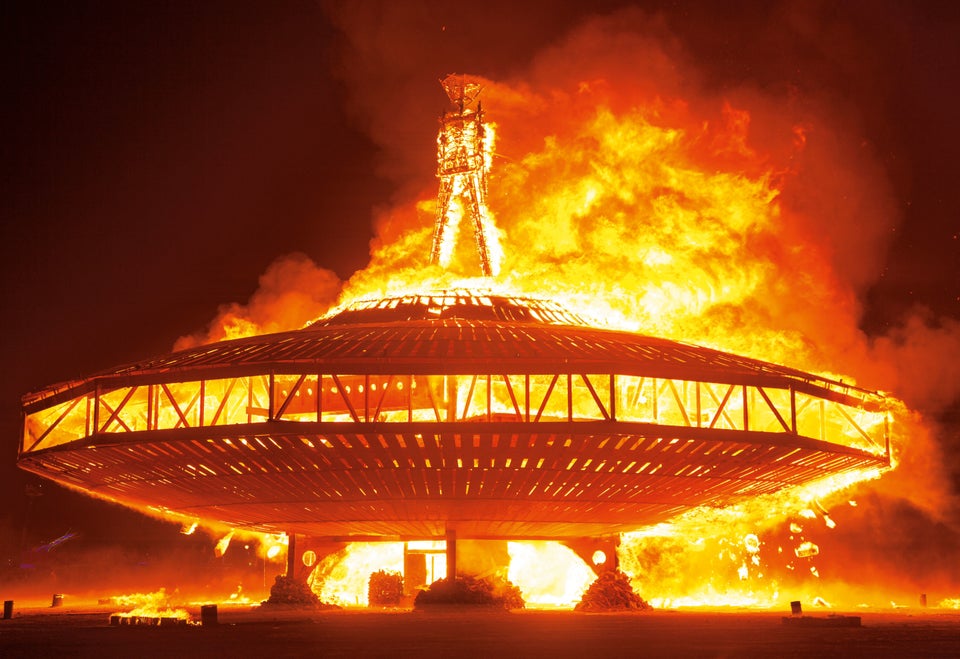

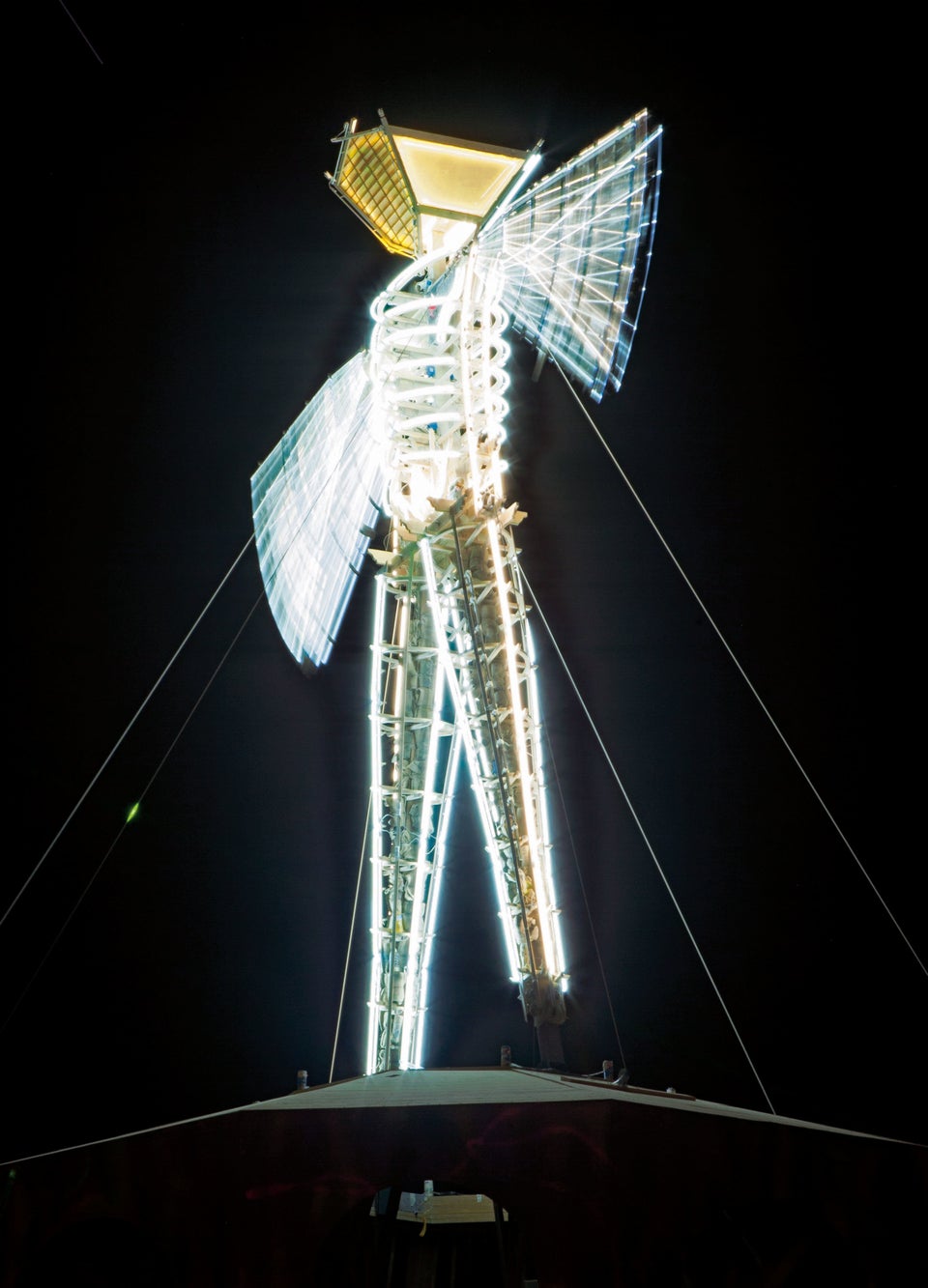

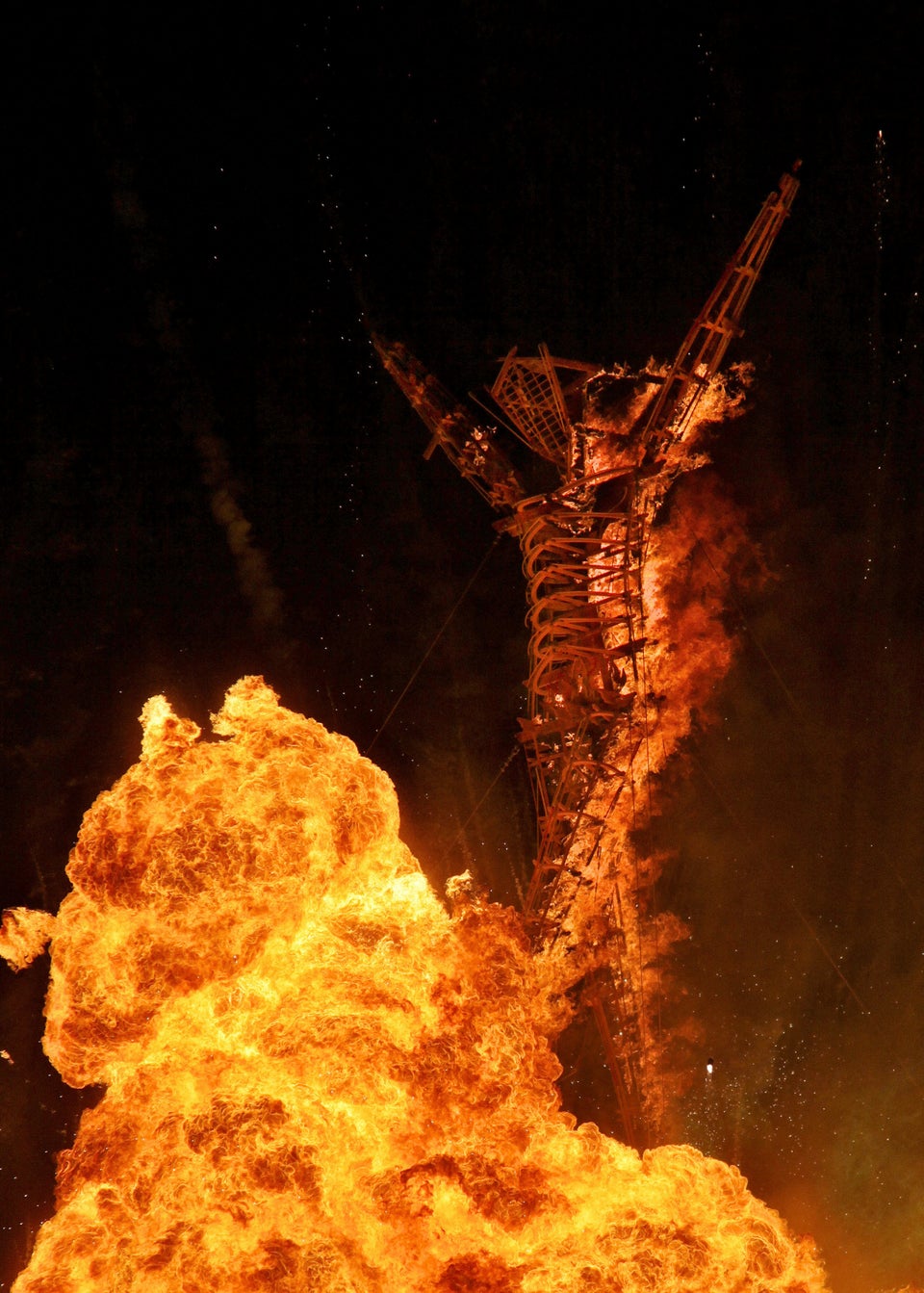
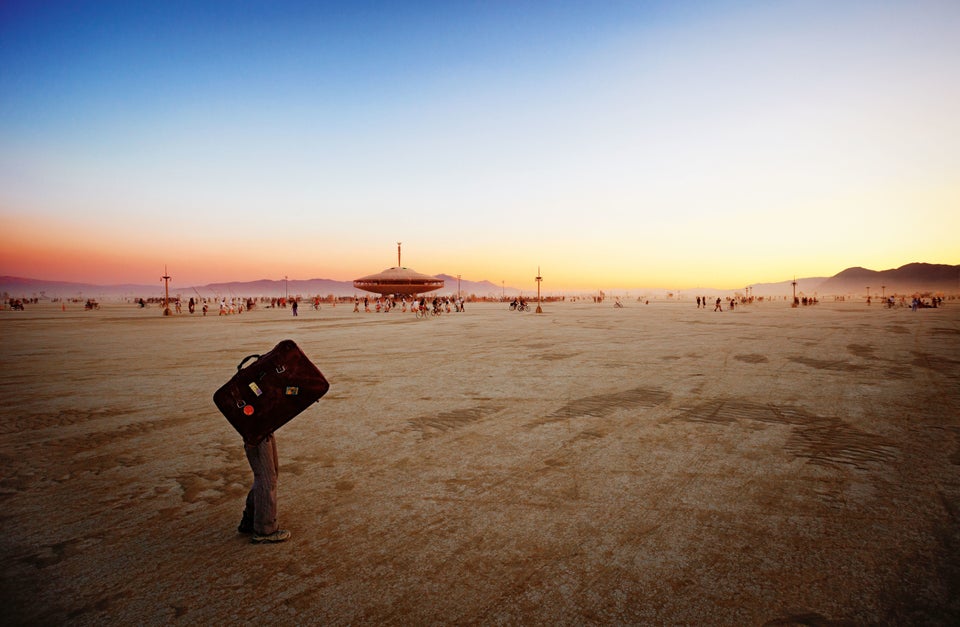
Also on HuffPost:
CORRECTION: An earlier version of this article cited Jack Haye as the creator of "The Temple of the Mind." In fact, the artist who was the driving force of the project was David Best.

